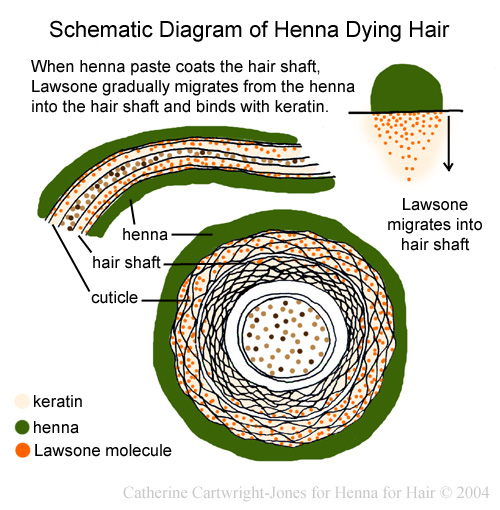|
Henna has Lawsone, a tannin dye molecule,
in its leaves. You can't see it because it is masked by the
chlorophyll. When you pulverize the leaves and mix them with a
slightly acidic liquid such as lemon juice, the dye molecule becomes
available as the cell walls' cellulose dissolves. The dye
molecule can then migrate out of the paste, breach cuticle cell walls
in the hair shaft, and bind with the keratin.
If the idea of Lawsone "migrating" from henna paste into keratin seems
confusing, compare it to this: if you put a wet teabag on a white table
cloth, the tannin in the tea "migrates" from the teabag into the cloth
fibers, binds with those fibers, and leaves a stain. And, the
longer you leave the teabag there, the darker the stain.
Body art quality henna has higher dye content than hair quality henna,
so more Lawsone is available to saturate the cuticle.
To release Lawsone efficiently, while preserving the hydrogen atoms
necessary to bind the molecule to the keratin, mix henna powder with an
acidic liquid, and leave it at room temperature overnight.
Click
on the images below for bigger pictures and more information on how to dye
your gray hair with henna, indigo, and other plant dyes:
   
|

